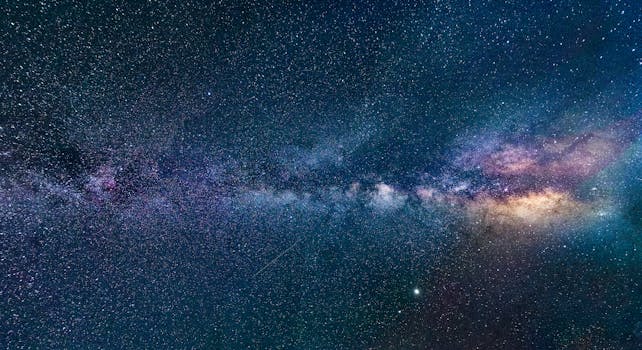
“
Beyond the Milky Way: Imagining New Worlds and Possibilities
Introduction to the Milky Way and Beyond
Beyond the Milky Way: Imagining New Worlds and Possibilities is a topic that has fascinated humans for centuries. The Milky Way, our home galaxy, is just one of billions of galaxies in the observable universe. As we continue to explore and learn more about the universe, we are constantly reminded of the vastness and complexity of the cosmos. In this article, we will delve into the latest discoveries and theories in astronomy and space exploration, and explore the possibilities of new worlds beyond our galaxy.
Understanding the Milky Way
The Milky Way is a barred spiral galaxy, consisting of hundreds of billions of stars, as well as various types of interstellar gas and dust. It is estimated to be approximately 100,000 light-years in diameter, and is thought to contain between 200 and 400 billion stars. The Milky Way is also home to a supermassive black hole, located at its center, which has a mass of approximately four million times that of our sun.
Exploring the Universe Beyond the Milky Way
As we look beyond the Milky Way, we find a vast array of galaxies, each with its own unique characteristics and features. Some galaxies are similar to our own, while others are quite different, with unusual shapes and compositions. The universe is also home to a variety of other objects, including stars, planets, asteroids, comets, and black holes. The study of these objects and their properties has led to a greater understanding of the universe and its many mysteries, as discussed in Charting New Realms.
Discovering New Worlds
The discovery of exoplanets, which are planets that orbit stars outside of our own solar system, has been a major area of research in recent years. Over 4,000 exoplanets have been discovered so far, and many of these planets are believed to be located in the habitable zones of their respective stars, where conditions are suitable for life as we know it. The search for life beyond Earth is an active area of research, with scientists using a variety of methods to search for signs of life, such as the presence of oxygen or methane in a planet’s atmosphere. This quest is closely tied to the themes explored in Soaring Through the Cosmos.
The Possibilities of New Worlds
The possibility of new worlds beyond our own galaxy is a topic of much speculation and debate. Some scientists believe that the universe may be teeming with life, while others argue that the conditions that allow for life on Earth are so rare that intelligent life may be unlikely to exist elsewhere. Regardless of whether or not we are alone in the universe, the search for new worlds and the possibility of life beyond Earth is a driving force behind much of the research in astronomy and space exploration.
Conclusion and Takeaways
In conclusion, the universe beyond the Milky Way is a vast and complex place, full of mysteries and wonders waiting to be discovered. As we continue to explore and learn more about the universe, we are constantly reminded of the vastness and complexity of the cosmos. The possibility of new worlds beyond our own galaxy is a topic of much speculation and debate, and the search for life beyond Earth is an active area of research. Some key takeaways from this article include:
- The Milky Way is just one of billions of galaxies in the observable universe.
- The universe is home to a vast array of galaxies, each with its own unique characteristics and features.
- The discovery of exoplanets has been a major area of research in recent years, with over 4,000 exoplanets discovered so far.
- The search for life beyond Earth is an active area of research, with scientists using a variety of methods to search for signs of life.
- The possibility of new worlds beyond our own galaxy is a topic of much speculation and debate, with some scientists believing that the universe may be teeming with life, while others argue that the conditions that allow for life on Earth are so rare that intelligent life may be unlikely to exist elsewhere.






